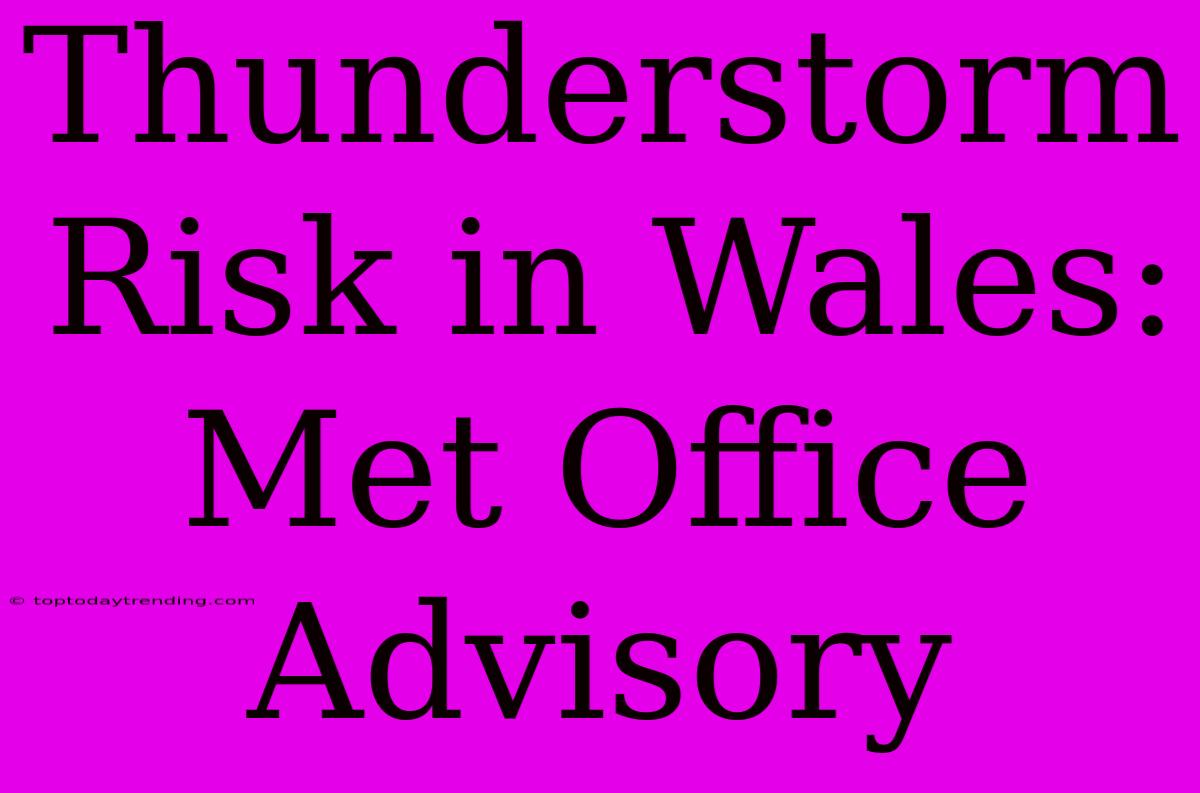Thunderstorm Risk in Wales: Met Office Advisory
Wales, with its breathtaking landscapes and unpredictable weather, is often prone to thunderstorms. Understanding the risks associated with these storms and taking necessary precautions is essential to ensure safety and minimize damage. The Met Office, the UK's national weather service, plays a crucial role in providing timely and accurate information about potential thunderstorms, helping residents and visitors alike stay informed and prepared.
Thunderstorms in Wales: A Common Occurrence
Thunderstorms are relatively common in Wales, particularly during the warmer months from June to September. These storms are often characterized by heavy rainfall, strong winds, and lightning strikes, posing significant hazards to people and property.
Here are some key factors contributing to thunderstorm risk in Wales:
- Warm, moist air: The prevailing westerly winds often bring warm, moist air from the Atlantic Ocean, creating ideal conditions for thunderstorms.
- Convective uplift: When warm, moist air rises, it cools and condenses, forming thunderclouds.
- Orographic lift: Mountains and hills in Wales can trigger uplift, forcing air to rise and creating favorable conditions for thunderstorm development.
Understanding the Met Office's Thunderstorm Warnings
The Met Office issues warnings for potential thunderstorms based on the severity of the threat and the likelihood of impacts. These warnings are color-coded and provide valuable information about the expected conditions and the potential risks.
- Yellow Warning: This indicates a chance of thunderstorms, with potential for disruption to travel, power outages, and flash flooding.
- Amber Warning: This signifies a higher likelihood of thunderstorms, with a greater risk of significant impacts, such as disruption to travel, power outages, damage to property, and potential for injuries.
- Red Warning: This is the most severe warning, indicating a high likelihood of severe thunderstorms with widespread and significant impacts, including dangerous lightning, torrential rain, and strong winds.
Staying Safe during a Thunderstorm
Here are some safety tips to follow during a thunderstorm:
- Seek shelter indoors: If you're outdoors when a thunderstorm approaches, find shelter in a sturdy building or a hard-top vehicle. Avoid being near windows or plumbing.
- Stay away from water: Avoid swimming, boating, or being near open water during a thunderstorm. Lightning can strike water and cause electrocution.
- Avoid contact with metal objects: Stay away from metal objects like fences, pipes, and electrical wires.
- Disconnect electrical appliances: Disconnect electronic equipment, appliances, and unplug any cords.
- Keep informed: Stay informed about weather forecasts and warnings through the Met Office website, app, or local news channels.
Thunderstorm Risks and Mitigation
Thunderstorms can pose a variety of risks, including:
- Lightning Strikes: Lightning is a major hazard during thunderstorms, posing a risk of electrocution and fires.
- Heavy Rainfall and Flooding: Thunderstorms can bring intense rainfall, leading to flash floods and surface water runoff, potentially causing damage to property and infrastructure.
- Strong Winds: Gusty winds associated with thunderstorms can damage trees, roofs, and power lines, leading to power outages and property damage.
Mitigation Measures:
- Ensure adequate drainage: Proper drainage systems can help prevent flooding and minimize damage from heavy rainfall.
- Secure outdoor objects: Secure loose objects like furniture, garden ornaments, and trampolines to prevent them from being blown around in strong winds.
- Prepare for power outages: Have a contingency plan in place, including flashlights, candles, and a battery-powered radio.
Conclusion
Thunderstorms are a natural phenomenon that can pose significant risks, but by understanding the weather warnings and following safety precautions, you can significantly reduce your risk of injury or damage. The Met Office provides crucial information and resources to help people stay safe during these events. By staying informed and taking appropriate action, we can minimize the impact of thunderstorms and ensure the safety of our communities.

